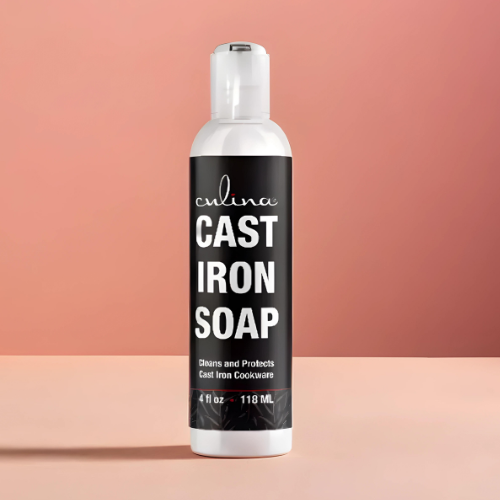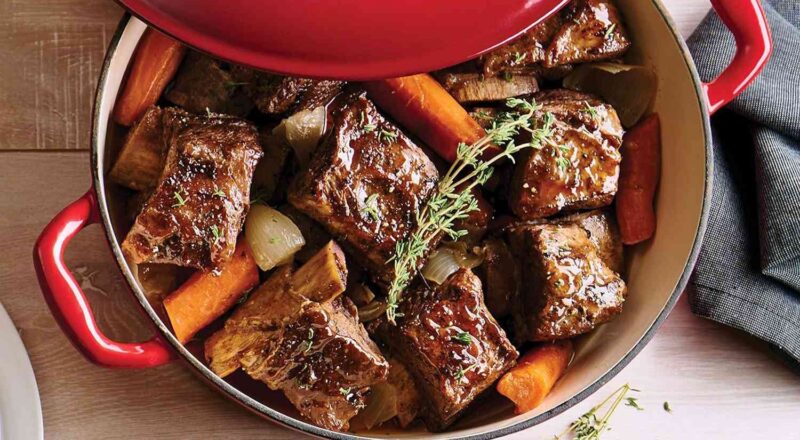Welcome, kitchen enthusiasts and home chefs! Are you keen to master the art of using a Dutch oven in a convection oven? This skill can be a game-changer in your culinary journey. Whether you’re baking bread, roasting meat, or making a delicious stew, understanding how to effectively utilize a Dutch oven in your convection oven can elevate your cooking skills to a professional level.

Understanding Dutch Ovens
What is a Dutch Oven?
A Dutch oven is a versatile cooking pot made from cast iron, enameled cast iron, or sometimes ceramic. It’s known for its ability to retain and evenly distribute heat. This makes it perfect for slow-cooking, baking, braising, and even frying.
Key Features of Dutch Ovens
- Heavy-Duty Construction: Typically made of cast iron which retains and evenly distributes heat.
- Tight-Fitting Lid: Helps trap moisture, ensuring your food remains juicy and tender.
- Versatility: Can be used on the stovetop and in the oven, making it ideal for a variety of cooking methods.
:max_bytes(150000):strip_icc()/Which-Dutch-Oven-Size-Is-Right-for-You-FW-tout-72667962e9d849258bce69ba1e82a7b9.jpg)
What is a Convection Oven?
How Does a Convection Oven Work?
A convection oven is similar to a traditional oven but has a fan and exhaust system. This setup circulates hot air around the food, cooking it more evenly and often more quickly than a conventional oven.
Benefits of Using a Convection Oven
- Even Cooking: The circulating air cooks food more uniformly.
- Faster Cooking Times: The fan helps to distribute heat more efficiently, reducing overall cooking time.
- Energy Efficiency: Because it cooks faster and at a lower temperature, a convection oven can save energy.

Prepping Your Equipment
Choosing the Right Dutch Oven
Select a Dutch oven made of quality cast iron. Ensure it’s oven-safe, including the lid and handles. Check here to pick the right one: clean Dutch oven.
Preparing Your Dutch Oven
Before using your Dutch oven in a convection oven, ensure it’s clean and dry. For cleaning tips, read our detailed guide on how to clean a Dutch oven.
Using a Dutch Oven in a Convection Oven
Step-by-Step Guide
Step 1: Preheat the Convection Oven
Preheat your convection oven to the required temperature. Generally, you’ll lower the recommended temperature by 25 degrees Fahrenheit for convection cooking.
Step 2: Prepare Ingredients
Chop, season, and organize your ingredients. The Dutch oven’s even heat distribution will ensure all elements cook to perfection.
Step 3: Cooking Process
Place your prepared Dutch oven in the preheated convection oven. Use the convection oven’s circulating air to your advantage, adjusting cooking times as necessary.
Ideal Recipes for a Dutch Oven in a Convection Oven
- Bread: Bake rustic, crusty loaves with a perfect crumb structure.
- Roasts: Achieve tender, flavorful meats with a beautifully caramelized exterior. Check out how to cook the perfect pot roast here: Cook pot roast.
- Stews and Soups: Enjoy rich, deeply flavored broths.
Maintaining Your Dutch Oven
Proper maintenance of your Dutch oven is crucial for longevity and performance. After each use, clean it thoroughly and dry it completely. For detailed maintenance tips, refer to our guide on cleaning Dutch oven.
FAQs
Can I use my Dutch oven on the stovetop and the convection oven?
Yes, Dutch ovens are designed to be used both on the stovetop and in the oven, making them highly versatile cooking tools.
How do I adjust cooking times for a convection oven?
Reduce the cooking temperature by 25 degrees Fahrenheit and monitor the food closely to avoid overcooking.
Can I bake bread in a Dutch oven using a convection oven?
Absolutely, baking bread in a Dutch oven yields excellent results, with a crispy crust and tender crumb. Read more about it here: Make bread in a Dutch oven.
Conclusion
Using a Dutch oven in a convection oven can significantly elevate your cooking skills. With even heat distribution and efficient cooking times, this method is perfect for a variety of dishes. Whether you’re a seasoned chef or a home cook, mastering this technique will undeniably enrich your culinary repertoire.
As an Amazon Associate, I earn from qualifying purchases.

